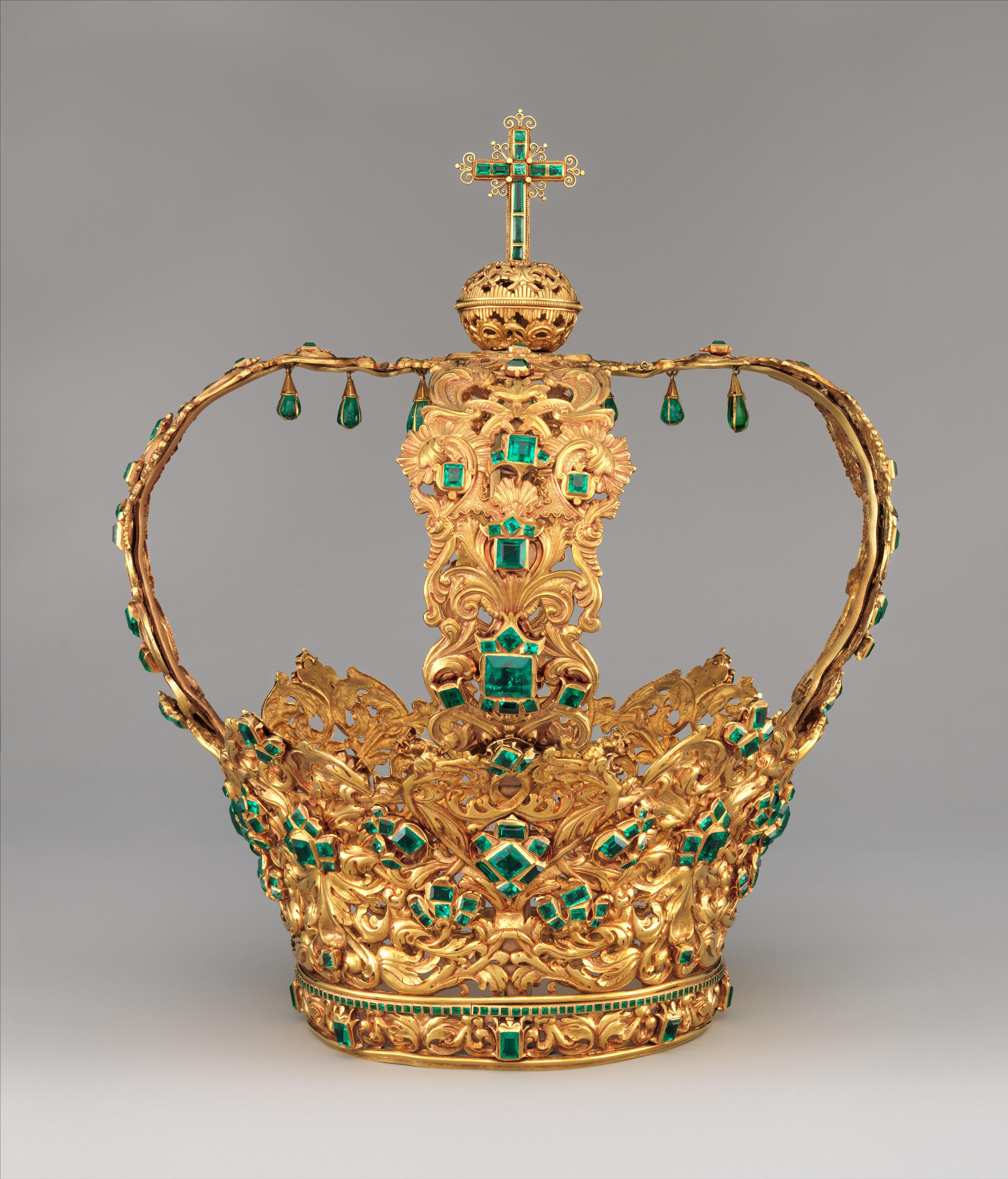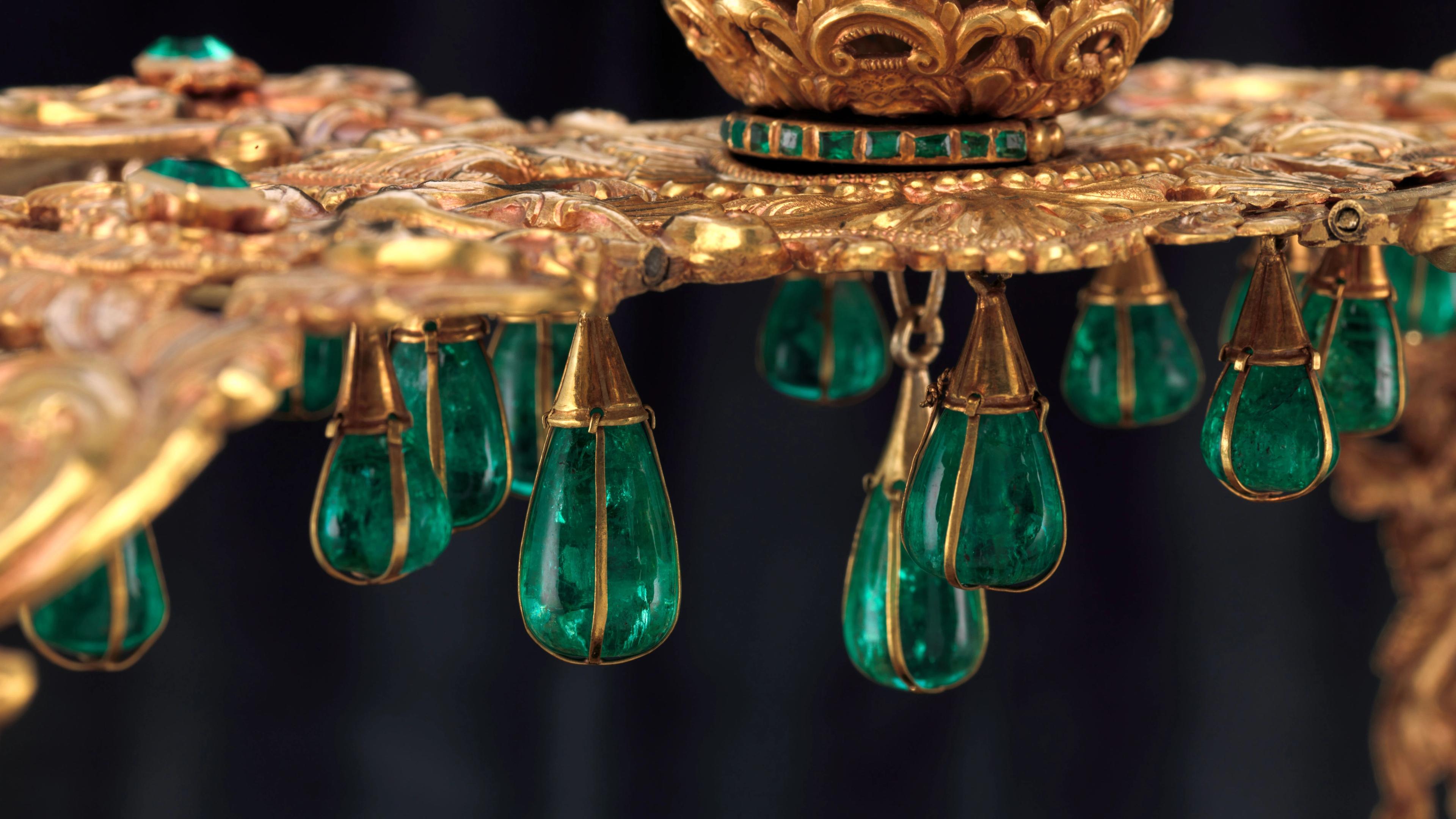The Met's spectacular, gold-and-emerald "Crown of the Andes" represents one of the finest surviving examples of Colonial Spanish American goldsmith work. Remarkable for its exquisite craftsmanship, the crown is also known for the size and quality of its over 400 untreated colonial South American emeralds (the largest of which, at twenty-four carats, is known as the "Atahualpa emerald"). Until just a few years ago, however, the crown was in danger of collapse.
Close study by a team of experts, extensive conservation treatment, and the ingenious construction of a customized mount—featured in the animated presentation on this page—helped restore the splendor and stability of the object and ensure its survival for future generations.

Crown of the Virgin of the Immaculate Conception, known as the "Crown of the Andes," ca. 1660 (diadem) and ca. 1770 (arches). Made in Colombia. Colombian; Popayán. Gold, repoussé and chased; emeralds; 13 1/2 in. (34.3 cm). The Metropolitan Museum of Art, New York, Purchase, Lila Acheson Wallace Gift, Acquisitions Fund and Mary Trumbull Adams Fund, 2015 (2015.437)
The crown was made to adorn a sculpture of the Virgin of the Immaculate Conception in the city of Popayán, in what is now southwestern Colombia. On important feast days, the statue would have been adorned with precious garments and jewels, including the crown, and carried in procession through the streets of the city for public veneration. The crown was sanctioned for sale by Pope Pius X in 1914, and by 1936 it was in the United States, where it was displayed it at various venues, including General Motors in Detroit and Macy's in Manhattan. The crown was frequently shown in connection with fundraisers and publicity events, as in 1937, when it was touted as "the world's most expensive centerpiece" at a dinner held on the occasion of the Great Lakes Exposition in Cleveland.
After centuries of use as a devotional object, followed by decades of handling in the U.S., the crown was in damaged and extremely fragile condition when it came to The Met in 2013. The arches were slumping due to extensive cracking and distortions in the gold, and there were concerns that the crown could spontaneously collapse.
Studying and Preserving the Crown
A Met conservator, research scientist, and curator collaborated on an extensive technical study that clarified some of the crown's complicated history of damages, alterations, and repairs.
Based on differences in style, manufacture, and composition, the crown is believed to have been assembled in the nineteenth century from elements taken from at least three earlier objects. The diadem, with its beautiful repoussé and chased decoration, dates to the mid-seventeenth century; the cross was originally a pectoral cross of a slightly earlier date; and the arches and orb date stylistically to around 1770. Differences in the backing material and style of the gold mounts suggest that the emeralds were applied at various points throughout the object's history.
Conservation preparators, who design and fabricate mounts for three-dimensional objects, played a key role in conserving the crown. When it first arrived in the Museum, they made a temporary mount to support the fragile arches during the study and treatment phases of the conservation. Matthew Cumbie was then tasked with the challenge of designing a permanent, yet reversible, mounting system that would be visually discreet while still providing enough support for the crown to be safely handled and displayed. Matthew's innovative work is presented in the animated slideshow above.
